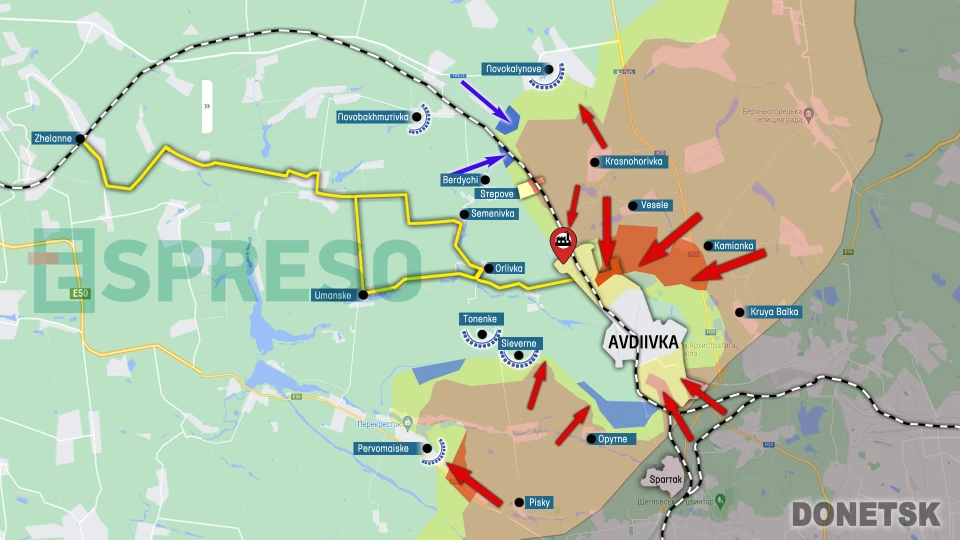
Europe expands military industry: Potential for deployment in Ukraine. Serhiy Zgurets’ column
In Ukraine, there are several locations where the Soviet Union once stored nuclear ammunition. These sites were designed to withstand even nuclear attacks
Regarding the first Recruiting Center of the Ukrainian Army
The Ministry of Defense of Ukraine, in collaboration with the Lviv city council, has initiated the "Recruiting Center of the Ukrainian Army." This pilot project aims to establish a new model of interaction between society, conscripts, and the Armed Forces. The objective is to allow motivated individuals to choose their service location based on their potential and skills. Following proper and high-quality training, they are expected to contribute optimally to a specific military unit.
Individuals preparing to defend the state have the opportunity to select a profession and unit. The Armed Forces are actively seeking various roles, including cooks, clerks, grenade launchers, and gunners. To address personnel shortages effectively, the Ministry of Defense of Ukraine and the Lviv City Council have jointly established the first Ukrainian Army Recruiting Center. Here, experts inform volunteers about available army positions, provide guidance to candidates, and administer career aptitude tests.
Oleksiy Bezhevets, the Commissioner for Recruiting at the Ministry of Defense, emphasized that the newly opened center is unrelated to conscription center activities. He clarified that it serves as a civilian institution where individuals can inquire about opportunities, explore position openings, and engage in discussions.
Once a person selects a position, recruiters facilitate an interview at a military unit with mutual consent. Volunteers have the option to sign either a fixed-term or pre-demobilization contract. Before starting their service, individuals undergo specialized training. The Ministry of Defense plans to establish similar recruiting centers across Ukraine, including Kyiv, Zaporizhzhia, Dnipro, Odesa, and Poltava.
While these steps alone may not fully strengthen the Ukrainian army, they represent a crucial initial move toward establishing a new philosophy of collaboration between society and the Armed Forces.
Frontline update – Avdiivka
Addressing the current situation on the front line, there are challenges in terms of manpower and weaponry. Mobilization and the pursuit of optimal solutions have faced delays in ensuring our frontline brigades are fully staffed. Notably, there were 86 military clashes in the past day, indicating a sustained high level of engagement over several weeks. This underscores the enemy's ongoing attempts to breach our defense line, with varying degrees of success.

Avdiivka presents the most challenging sector on the front. Nearly one-third of the day's fighting occurred in various directions around Avdiivka, particularly along the highway, a vital logistical artery for our forces.
Dmytro Lazutkin, an Armed Forces officer stationed in the Avdiivka area, described the challenging situation, noting that the enemy is launching attacks from multiple directions. They are attempting to circumvent the Coke Plant from the northeast but are being successfully repelled. Lazutkin highlighted the effectiveness of FPV drones employed by almost all our brigades in countering these maneuvers. These drones serve as a primary force, aiding in the destruction of invaders and their equipment. Despite this, the Russian army is heavily engaging in artillery shelling, with over 30 guided aerial bombs launched daily. The occupiers are reported to incur losses more than ten times that of Ukrainian forces.
The AFU officer mentioned that, based on various sources, the enemy is now less than a kilometer away from the main highway, causing logistical challenges. However, alternative routes further south allow for the evacuation and transportation of supplies. While the situation is difficult, and arguably critical, current resistance is ongoing, inflicting considerable damage on the enemy.
Lazutkin added that the occupiers had concentrated significant forces in the Avdiivka direction, including special forces, "Storm Z," "Storm V," mobilized units, as well as motorized rifle brigades and tank units. Ukrainian Defense Forces personnel demonstrate stability, composure, and task completion. Regarding future plans, Lazutkin noted that the command has a better understanding of the situation, and decisions will be made based on optimal circumstances. Whether to withdraw from Avdiivka or maintain it will depend on specific goals, but such strategic details are unlikely to be openly disclosed due to the nature of war.
Regarding ammunition production in Europe
Now, let's delve into the topic of weapons, acknowledging that ammunition shortages significantly impact the course and outcome of conflicts. Recent information highlights that the Rheinmetall plant, a German military equipment manufacturer, is initiating preparations for a new facility on its premises. Rheinmetall already owns five enterprises acquired from various countries. In addition to its existing capacities, the German manufacturer is establishing another facility in Germany. This new factory will cater to the ammunition needs of both Germany and the Armed Forces of Ukraine.
Rheinmetall currently stands as Europe's leading ammunition producer. By year-end, the German manufacturer aims to produce 700,000 units. The forthcoming facility, expected to be operational in one to two years, is slated to initially produce 50,000 rounds annually, later ramping up to 200,000 per year. This implies Rheinmetall will contribute significantly, manufacturing a total of 900,000 ammunition units annually. To put this into perspective, France produces 100,000 rounds yearly, while the Nammo concern's enterprises collectively produce 80,000 annually. Consequently, their combined output is projected to approach around 1 million munitions by late 2024 or early to mid-2025.
There is information indicating that the Israeli company Elbit has signed a contract with an undisclosed foreign customer to establish an ammunition production facility on their territory within a year and a half. This suggests that the process of creating new plants is currently in progress.
It's crucial that our Ministry of Technology actively participates in this initiative, leveraging existing partnerships to expand our potential through the establishment of new enterprises. Some might question the choice of locations, considering the potential threat of missile attacks. However, there are secure areas in Ukraine, formerly used to store nuclear ammunition from the Soviet Union. These locations were designed to withstand even nuclear munitions, providing suitable places for such production.
To build a robust defense industry, we need a systematic approach that involves both private companies and official entities. It is hoped that our higher authorities recognize this trend and take the necessary steps, ensuring the swift acquisition of new capabilities for the Ukrainian army.
- News












































